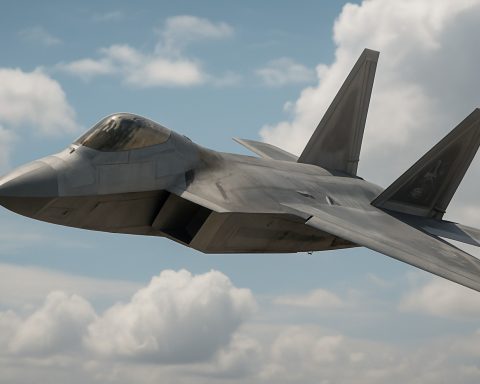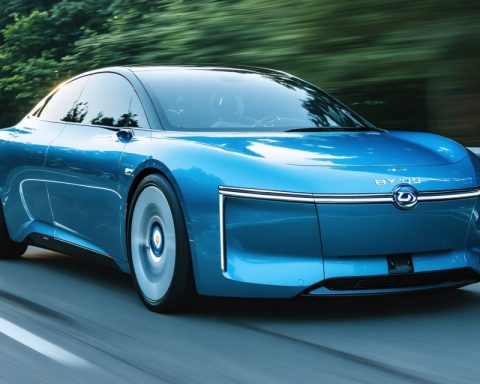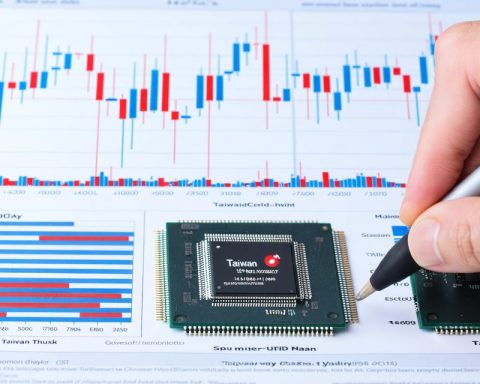- Nvidia dominates the AI chip market with an 80% market share, largely due to its powerful GPUs.
- Recent revenues exceeded $35 billion, fueled by high demand from tech giants for its advanced chips.
- New competition arises as major customers like Amazon and Meta develop their own chips, such as Amazon’s Trainium and Meta’s MTIA, to reduce costs and reliance on Nvidia.
- Potential rivals, including OpenAI and Chinese start-up DeepSeek, challenge Nvidia’s necessity with alternative solutions.
- Despite emerging competition, Nvidia maintains an edge with its superior GPUs and comprehensive ecosystem indispensable for crucial AI operations.
- Nvidia remains a key player, evolving strategically to shape the future of the AI industry.
In the pulsating tides of the AI revolution, Nvidia stands as the undisputed titan, clutching a staggering 80% of the market for AI chips. The world’s most powerful graphics processing units (GPUs), crafted by Nvidia, serve as the beating heart of major AI operations—whether it’s training data-hungry models or pushing inferencing capabilities to new heights. Swarmed by eager tech giants, Nvidia’s fortunes have soared, recently reporting revenues north of $35 billion, driven by relentless demand for its cutting-edge chips.
However, like any mighty empire, Nvidia faces formidable threats from unexpected corners. A new wave of competition is brewing, not from traditional rivals like AMD or Intel, but from within its customer base. Major players, including Amazon and Meta, are rolling up their sleeves, diving into the chip-making arena. Amazon’s Trainium chips and Meta’s in-house MTIA chips exemplify a growing trend towards self-reliance, seeking to slash costs and reduce dependency on Nvidia.
Adding fuel to the fire, whispers suggest OpenAI is on the brink of introducing its own chips. Even Chinese start-up DeepSeek has demonstrated that lower-performance Nvidia chips might suffice for certain tasks, questioning the necessity of Nvidia’s premium offerings.
But here’s the crux: is Nvidia cornered? Not quite. The tech behemoths may flirt with their own hardware, but Nvidia remains the benchmark for excellence. Companies are unlikely to entirely abandon Nvidia’s superior GPUs for crucial tasks. Plus, Nvidia’s offerings extend beyond mere chips, encompassing a robust ecosystem poised to fuel AI ambitions.
For Nvidia, the game is far from over. With strategic maneuvers, the company is not merely a participant but a pivotal player charting the course as the AI saga unfolds.
Nvidia’s Reign in AI Dominance: Can Competitors Challenge the Titan?
How-To Steps & Life Hacks: Maximizing Nvidia’s GPUs
For those leveraging Nvidia’s GPUs, here are streamlined tips to enhance performance:
1. Optimize Settings: Use the Nvidia Control Panel to fine-tune GPU settings. Enable features like G-SYNC for a smoother experience.
2. Update Drivers Regularly: Keeping your Nvidia GPU drivers up-to-date ensures better performance and bug fixes.
3. Use Nvidia DLSS (Deep Learning Super Sampling): Utilize AI to improve graphical fidelity without sacrificing performance.
4. Leverage CUDA Cores: Developers can harness Nvidia’s CUDA architecture for parallel processing, accelerating computing tasks.
Real-World Use Cases
Nvidia’s GPUs are pivotal across various industries:
– Healthcare: AI-powered diagnostics and research.
– Automotive: Autonomous vehicle development using DRIVE platform.
– Gaming: Real-time ray tracing and advanced graphics rendering.
– Finance: Predictive analytics and high-frequency trading.
Market Forecasts & Industry Trends
Nvidia remains central in the AI chip market, expected to grow significantly:
– AI Chip Market Projections: Valued at over $50 billion by 2030, spurred by industries like automotive and data centers.
– Emerging Trends: Growth in edge computing and AI applications across IoT devices.
Reviews & Comparisons
In comparing Nvidia with competitors:
– AMD and Intel: Offer competitive GPUs but lag in AI-specific performance.
– Amazon and Meta’s Custom Solutions: Ideal for specific tasks but lack Nvidia’s comprehensive ecosystem and tool support.
Controversies & Limitations
While Nvidia leads, it faces challenges:
– Supply Chain Issues: Global chip shortages impacting production.
– Competition from Major Customers: As Amazon and Meta develop in-house chips, potential market share collection could occur.
Features, Specs & Pricing
Key highlights of Nvidia’s offerings:
– RTX 4090: Features advanced ray tracing and AI capabilities.
– Professional GPUs (e.g., A100): Designed for research and large data modeling, exceeding $10,000 per unit but offering unmatched performance.
Security & Sustainability
Nvidia focuses on:
– Security Updates: Regular firmware and driver updates, ensuring safeguard from vulnerabilities.
– Sustainability Efforts: Committed to reducing carbon footprint with energy-efficient designs and responsible sourcing.
Insights & Predictions
Despite emerging competitors, Nvidia is poised to retain leadership:
– Ecosystem Growth: Proprietary platforms like Omniverse expand opportunities beyond chips.
– Collaboration Potential: Partnerships with independent software vendors (ISVs) for enhanced ecosystem integration.
Tutorials & Compatibility
Nvidia offers comprehensive resources:
– Nvidia Developer Portal: Access tutorials, SDKs, and documentation for software integration.
– NVIDIA Omniverse: A platform for collaboration and simulation among content creators and AI developers.
Pros & Cons Overview
Pros:
– Market leader in AI chip performance.
– Comprehensive ecosystem and software support.
– Strong R&D capabilities and innovation pipeline.
Cons:
– Premium pricing might not be feasible for all.
– Dependency on supply chain stability.
Actionable Recommendations
– For Businesses: Evaluate if custom solutions like Amazon’s Trainium offer potential cost benefits without sacrificing quality.
– For Developers: Engage with Nvidia’s developer resources for optimized application performance.
– For Investors: Scrutinize Nvidia’s strategic investments and partnerships for long-term growth potential.
For more information on Nvidia products and solutions, visit the Nvidia website.
By understanding both its strengths and challenges, stakeholders can make informed decisions about Nvidia’s role in the burgeoning AI chip market.














